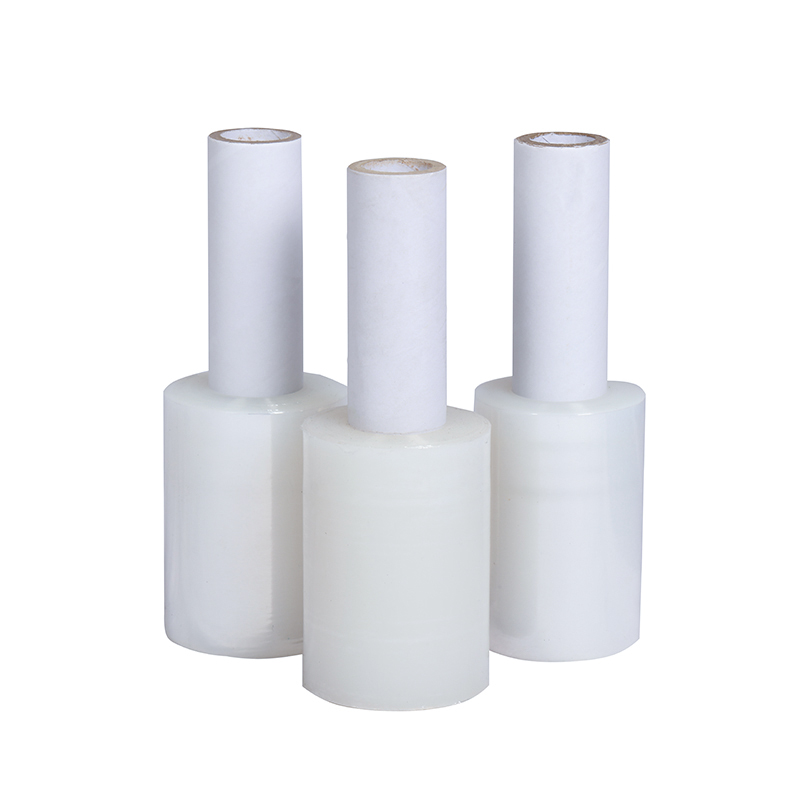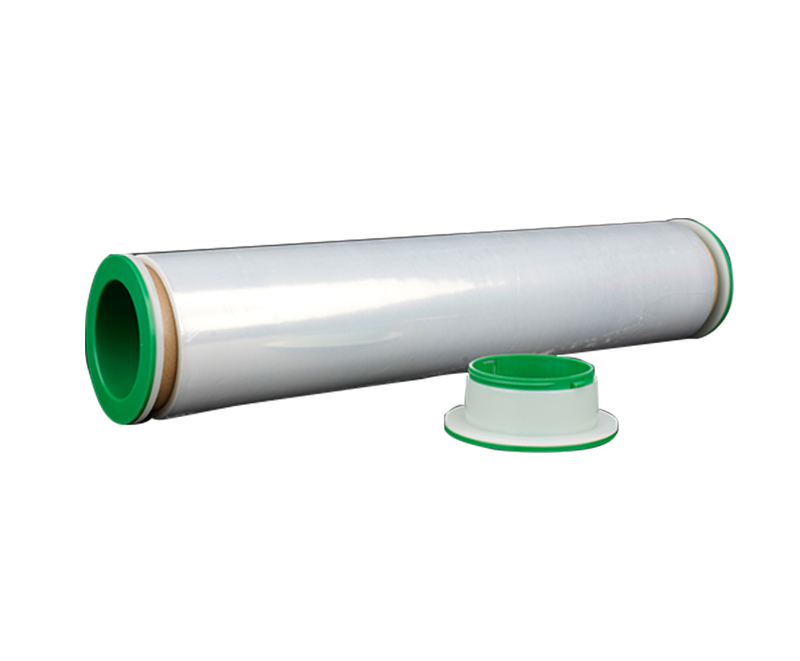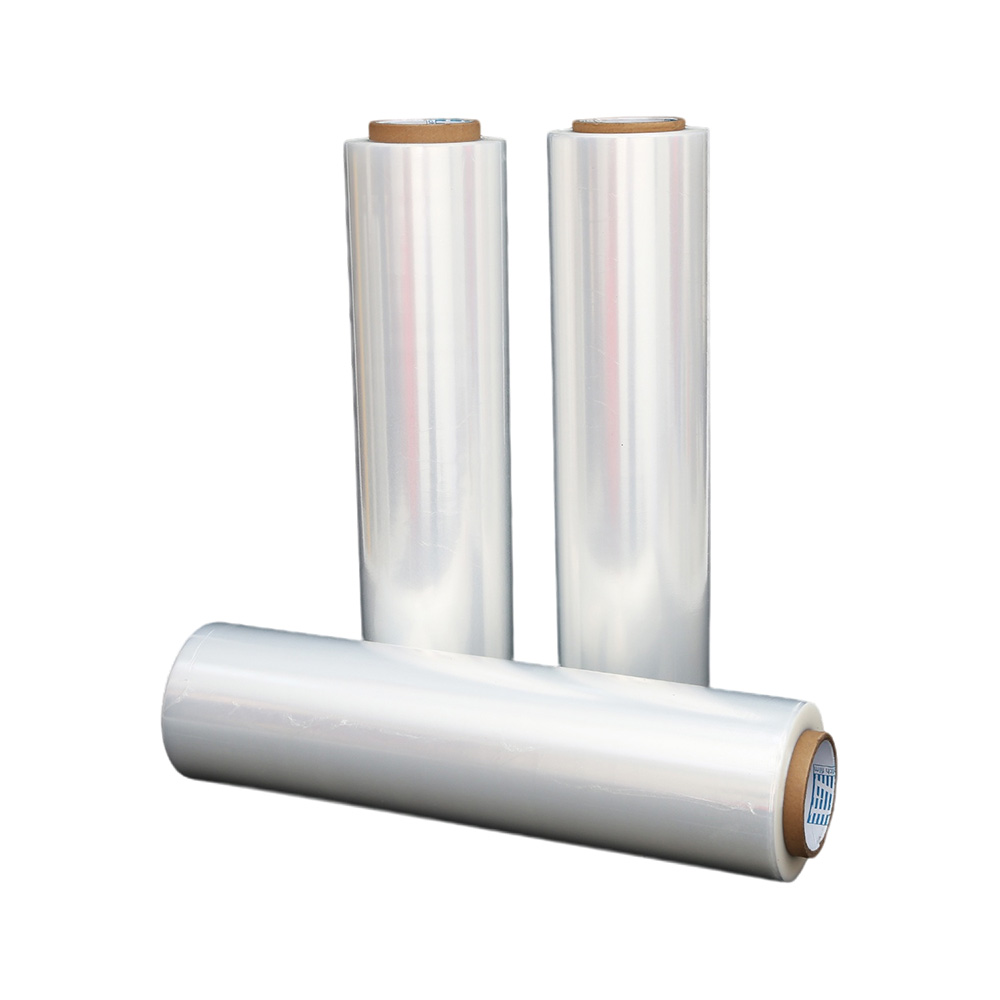What additives are typically used in the stretch film produc
Source:What additives are typically used in the stretch film producTime:2022-10-10Visitors:
Stretch film is widely used for its lightness, thinness, affordability, portability and shape change. In particular, the quantity and quality of stretch films are increasing, especially in food and consumer packaging and agricultural mulch materials, and there is a growing demand for new stretch film materials. To improve the quality and functionality of stretch films, it is no longer enough to rely on resin matrix changes and molding process improvements to meet the market's needs.
What additives are generally used in the stretch film production process?
The next stretch film manufacturers to give you a detailed introduction, the details are as follows.
1. Bi-directional stretching additives
Biaxially oriented materials have always played an important role in stretch film packaging, biaxially oriented polypropylene (BOPP), polyester (BOPET), nylon (BOPA) and other applications are increasingly widespread. Traditional PVC stretch films are widely used in various vegetable and fruit preservation, long-term frozen food packaging, microwave baked food packaging, and conductive stretch films for electronic component packaging.
In addition, products such as cast polypropylene (CPP) and cast polyethylene (CPE) are also produced in larger quantities. With the above packaging stretch film material additives products mainly include antistatic agents, slip and anti-adhesive agents, stiffening agents, heat stabilizers, antioxidants and barrier agents.
2. Stretch film antistatic agents
Industrial antistatic agent is mainly a single compound or compound of some non-ionic and ionic surfactants. According to its molecular hydrophilic group can be ionized, divided into ionic and non-ionic, and ionic type is divided into cationic type, anionic type and amphoteric type. Antistatic principle is the use of its hydrophilic group in the plastic surface to absorb water vapor in the air, or arranged on the surface to form a conductive layer to reduce the surface resistance value.
Cationic antistatic agent antistatic performance is excellent, but usually poor thermal stability, high-temperature processing conditions, easy to decompose and cause discoloration, generally only used in PVC products. And anionic antistatic agent can not be used for stretch film products because it will affect the transparency.
Non-ionic antistatic agent with low toxicity, good thermal stability, not easy to cause plastic aging and other characteristics, so that it has become the main packaging materials added within the type of antistatic agent. The main varieties of fatty acid polyol esters, fatty acids, alcohols, amines of ethylene oxide adducts.
In packaging materials, antistatic agent performance is determined not only to examine its antistatic effect, but also pay attention to its impact on the performance of the product. Because of this, the key to the development of antistatic agents technology focused on the structural design of various types of surfactants and the examination of compatibility. At present, the development of series, specialized products is an important development direction of antistatic agents.

3. Stretch film anti-adhesive agent
The faster the processing speed, the easier to generate static electricity due to friction, stretch film (plastic products) between the more likely to adhere, seriously hinder the high line speed extrusion; stretch film, the better the transparency, the higher the processing molding temperature, the more likely to agglomerate, adhesion. Therefore, efficient slip agents and anti-adhesive agents play an exceptionally important role in plastic production and automated packaging.
Common slip agent varieties are amines (amine oleate and amine erucate), soaps (calcium stearate, etc.) and silicones (silicone). The latter is a liquid, adding the use of inconvenient and expensive. Soap products, although cheap, but the effect is not ideal, and add a large amount, in the middle and high-grade products basically can not be used. Packaging stretch film in the common slip agent is mostly amine compounds, such as for LDPE stretch film in the amine oleate; for PP stretch film in the amine erucate.
Anti-adhesive agents, also known as opening agents, are generally inorganic fine particles such as silica. However, traditional inorganic openers tend to affect haze due to different refractive coefficients from the base resin. The latest development of polymer particles as an opening agent solves this problem.
4. Stretch film stiffening agent
Packaging material stiffener, also known as stiffening agent, is mainly used in tobacco BOPP heat shrinkable film to improve the stiffness of BOPP stretch film, improve the appearance of the packaged goods, thereby enhancing the value of goods. At present, the merit of stiffening agent is mainly measured by examining the degree of improvement of the elastic modulus of the stretch film. For tobacco BOPP heat shrink film, manufacturers also require the performance of the stiffener: can not affect the stretch film haze and other mechanical properties, reduce the heat sealing temperature, etc..
At present, the development of stiffening agents are mainly concentrated in two areas. One way is to use polymers containing rigid chain segments in the structure to form an alloy with PP to improve the elastic modulus of BOPP. The commonly used polymers are: polycyclopentadiene, etc. The other way is to implement stiffening based on the principle of promoting nucleation, where the presence of fine particles exerts a heterogeneous nucleation effect to promote and improve the crystallization of PP with uniform and fine grains to improve the stiffness of the product. Under the influence of this idea, the use of organic nucleating agents to achieve stiffening applications have been developed.
5. Stretch film heat stabilizer
Heat stabilizers for PVC packaging material products focus on the development of non-toxic heat stabilizers to replace cadmium, lead and other heavy metals.
The development of organic heat stabilizers is one of the important aspects. Organotin stabilizers have significant advantages in terms of transparency and color stability. The development of organotin products is focused on the development of methyltin and sulfur-free organotin. At present, the production of organotin heat stabilizers is beginning to take shape.
With the further requirements of environmental protection, is gradually restricting the use of organotin, which makes calcium / zinc heat stabilizers gradually become the mainstream of PVC heat stabilizers non-toxic. With the development of domestic calcium / zinc stabilizer technology, its heat stabilization efficiency has been improved, and successively developed a high-efficiency calcium / zinc heat stabilizer, which can partially or fully replace the organic tin or barium cadmium zinc heat stabilizer.
The new green heat stabilizer - organic class heat stabilizer is the ultimate direction of development of PVC packaging materials with heat stabilizers non-toxic.
6. Stretch film antioxidants
Packaging materials due to the specificity of its application, such as packaging food, cosmetics, etc., for antioxidant hygiene requirements are very high, although many common antioxidants for toxicity testing, but the application is still inevitably worrying. New antioxidant vitamin E has excellent anti-thermal oxidation, itself non-toxic side effects, the packaging products industry is favored.
Packaging materials close to daily life, and consumption is huge, the recycling of plastic packaging waste is more prominent, resulting in a greater demand for new types of recycling plastic additives. Among them, special antioxidants can avoid the repeated processing of resin yellowing, a significant decline in strength, to facilitate the development of recycling efforts.
But packaging materials, especially stretch film materials, are often a variety of resin complexes, the general hindered phenol and phosphite with the system, for the mixed system of anti-thermal oxidation effect is not very satisfactory. The development of recycling packaging materials antioxidant or process stabilizer system additives is becoming a hot spot for such areas of research.
7. Stretch film barrier agent
In order to prevent various types of gas through the stretch film, to extend the storage period of the packaging material, the market demand for new barrier packaging stretch film more and more. In addition to the use of new high barrier packaging materials with excellent barrier resin and the use of SiOx steam surface deposition treatment, adding a certain amount of barrier agent is also an important means.
At present, the barrier agent is mainly inorganic fillers, such as: laminated hydrotalcite and sericite, etc. Its form is often flaky, distributed in layers in the product, and reduces the gas transmission rate by increasing the diffusion stroke of gas and water vapor in the resin. With the rising research on nanomaterials, the application of nanomaterials in packaging materials, especially the research and development for stretch films with good barrier effect has been gradually carried out.
Recommended Products
Ranked in the same article
- how to use the stretch film technology to r
- How can we get detailed price list?
- Five common quality problems of PE protecti
- Plastic film degradation
- How to guarantee punctual shipment for our
- Gauge to Micron and Millimetre Conversion G
- What is the difference between stretch film
- Testing the permeability of stretch film
- Stretch film temperature requirements
- Electrical wire film VS electrostatic film
- Why insufficient transparency of stretch w
Latest news articles
- Testing the permeability of stretch film
- Factors That Affect the Stretching Function
- Exploring the Versatility of PE Stretch Fil
- What Is the Difference Between Shrink Wrap
- PE stretch film how to cut?
- What is Stretch Film Used For?
- The Influence of Stretch Film Thickness on
- The use of pe stretch film
- What Is Red Stretch Film and What Are Its B
- PE vs PVC Stretch Film: A Comprehensive Gui
- Stretch Film Wrap: Exploring Its Advantages



